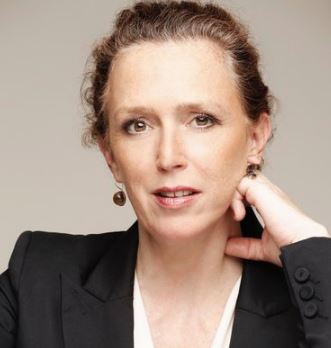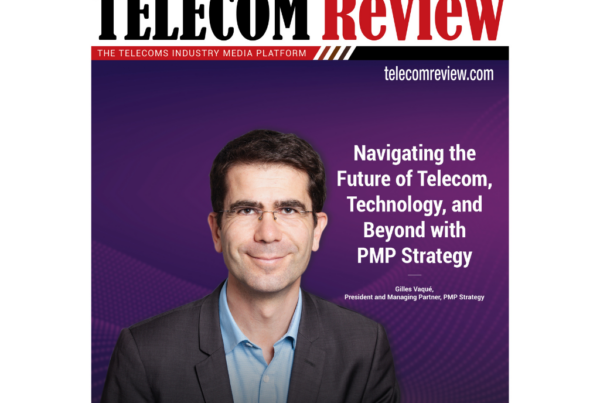The Need, the Technology, the Economic Rationale
On June 6, during a morning devoted to teleconsultation and organized by the Cercle Lab and PMP, we brought together six operators present on this market to discuss the new regulatory framework, the role of private platforms and the economic model of the development of this opportunity for our health system offered by new technologies.
“Teleconsultation… After the enthusiasm, what assessment, what actual use? “
Three representatives of assistance companies and three operators who have developed an activity around this new market opportunity presented their offers, their vision of the new “regulatory” deal, and their convictions to anchor the practice of teleconsultation in the future. uses around a sustainable economic model.
- Anne-Claire Hay, Mondial Assistance, Head of Health & Lifecare Market
- Guillaume Lesdos, Medaviz, President
- François Lescure, Direct Doctor, President
- Jean Kramarz, AXA Assistance, Health Director
- Eric Vilon, Bien-Etre Assistance, Managing Director
- Marie-Laure Saillard, MesDocteurs, Director of Operations and Development
- A historical practice, daily teleconsultation or the prose of Monsieur Jourdain
Before being an opportunity that could find development and security within the framework of the new technological situation, teleconsultation, it was you and me with our favorite doctor who had imagined pragmatic organizations to better serve patients and optimize the doctor’s time. The pediatrician who opens fixed slots in his diary to receive calls from non-visiting patients and respond to the anxieties of parents without requiring a visit thanks to a perfect knowledge of the young patient stored… in Bristol files… and in the specialist’s mind. The very famous ENT that we tear up, who sees you once an hour to make the diagnosis, to explain to you, and to say to you “I will not see you again for a year except in emergency,we communicate and we adapt the treatment by email … it will be 100th “… and finally” cheap paid “to be followed for a year!
A definition to catch up with the opportunities offered by new technologies and a structured offer
The law of August 13, 2004 reforming health insurance, the HPST law of 7/21/2009 and the decree of 10/19/2010 relating to telemedicine set the framework for teleconsultation, with a definition, the opening to experimentation, funding that does not go through the individual and authorizations to be obtained from an ARS.
Teleconsultation is an “act of consultation carried out at a distance which aims to allow a patient to consult a medical professional by means of a device using information and communication technologies”.
In this first framework which opens the way to the “official” development of this practice and while waiting for more lasting rules of the game concerning the financing of this practice, the historical actors of the teleconsult have designed solutions, sought approvals from ARS and we sought to make their offer solvent either in BtoC or BtoBtoC; the second model having quickly taken precedence over the first because of the low appetite of the patient or the French consumer for the payment of a health act and a difficulty in financing the communication necessary for the success of a model in BtoC. In terms of offers, the essential differences lie in the organization of the management of patient demand (first / second line), the nature of the health professionals (nurses, general practitioners,medical specialists, other paramedical specialties), the status of professionals in relation to the structure (employees / contractors, etc.), the media used (telephone, video, chat, e-mail, etc.), opening hours, the positioning of the ‘offer (second opinion, preparation of a consultation, first line to qualify and reassure, prevention, support for chronic pathology, etc.), the tools used and the greater or lesser “standardization of the practice” (use of support tools diagnosis, promotion of best practices).first line to qualify and reassure, prevention, chronic pathology support, etc.), the tools used and the greater or lesser “standardization of practice” (use of diagnostic assistance tools, promotion of best practices).first line to qualify and reassure, prevention, chronic pathology support, etc.), the tools used and the greater or lesser “standardization of practice” (use of diagnostic assistance tools, promotion of best practices).
It is interesting to note that the history of the teleconsultation “operator” structure has a strong impact on the orientation of the offer. Thus, the Axa Assistance teleconsultation project was built in strong synergy with the insurer Axa, Mondial Assistance worked on teleconsultation by capitalizing on assistance assets and with an international ambition, Bien-Etre Assistance, a subsidiary of Europ Assistance and Malakoff Mederic treated teleconsultation as one of the tools of telemedicine and in a dynamic of accompanying the individual’s care path.
The rules of the game clarified: teleconsultation integrated into the care pathway and the impact on the private platforms that have developed since 2015
As part of the 2018 Social Security Finance Law, teleconsultation will fall under the common law of reimbursement by health insurance, with pricing and terms of coverage by the compulsory scheme identical to that of a visit to the office. This is the establishment of a legal framework for the historical practice of the doctor in office who continues the care of his patient in remote modalities.
This new situation, which has the merit of clearly affirming that teleconsultation is just another form of exercise which must find its place in the general organization of the health course, raises the question of how the private platforms that have developed an offer “alongside” the traditional health system (treating physician / reimbursement of Social Security) will change their organization and their offer to be able to fit into this funding framework. “There will be a before and an after September 15th”
It also raises the question of whether despite everything there is not another place for teleconsultation in addition to the intervention of the attending physician, emergencies, Samu …
The conviction of the existence of a market … and when it will be necessary to demonstrate that there is strength in unity
All the actors present in the room are convinced that teleconsultation will represent in the medium term around 10% of consultations carried out in practice. In this context, the few players present legitimately consider that more than competitors, they are the precursors of a new market that none of them will have the capacity to address on their own and that therefore needs to be united. their strengths on the one hand to influence the orientations of the public authorities in matters of regulation and financing, and on the other hand to help ensure that this new practice becomes part of the practices of the French.
Insurers, from strategic conviction to “must have”
In 2015, AXA Assistance was the first assistant to launch teleconsultation and Médecin Direct also obtained approval to operate in this market.
Since then, approvals have multiplied, and today almost all of the top 15 complementary health insurance has chosen and deployed a teleconsultation offer in the inclusion of their insurance guarantees. The lucky ones: Axa Assistance, Bien-Etre Assistance, Direct Doctor, My Doctors, H4D.
However, we can feel differences of vision and investment, between:
- insurers who consider that beyond being healthcare and healthcare funders, they are also players in the healthcare system,
- insurers who consider services, and in particular health services, as a growth driver for their development,
- insurers who have deployed teleconsultation as one of the many services providing an offer at market level, in a process of differentiation, and with a primarily marketing concern.
The differences between these different postures will be measured by the rate of teleconsultation use.
The question that should not be forgotten: how to encourage the use of teleconsultation?
Today, 2% of French people say they have used teleconsultation and 50% say they are ready to use it. Between these two figures, a formidable challenge to take up, the use and to achieve this three main tools: communication, performance and relevance of the service, its accessibility and the financing of its cost.
Since 2015, and the integration of the first solutions into complementary health contracts, the players have developed their knowledge, refined their solutions, improved their offer, learned about uses, but very quickly the deployment and the learning curve will come up against the question of funding.
In fact, most of these inclusions were negotiated at very low prices by protected persons playing on the one hand on an appetite not yet proven, and on poor communication.
Thus, either the service is not good and / or the insurers are only pretending to push it, and the teleconsultation in the insurance contracts will meet the same fate as the historical guarantees of teleconseil, or the service is good and known and the ten euro cents negotiated with companies operating teleconsultation will be shattered.
The question to be answered: who pays and why?
Public expenditure is constrained and the economic equilibrium of insurers under surveillance (SII).
French patients / consumers / insured persons have become accustomed to “consuming” health within the framework of indirect financing perceived as very heavy and inducing that it would be unthinkable for most of them to pay for their health at the time. -beyond these various levies and taxes.
However, in the first instance, teleconsultation is above all an additional cost which one cannot hope in the short term that it will induce reductions in expenditure for the public or private payer; except to demonstrate within the framework of a medico / socio / economic analysis that there is a positive economic equation at the end of the deployment of the teleconsultation and in particular:
- savings in transport costs,
- less drug consumption,
- decrease in work stoppages,
- prevention (primary / secondary / tertiary),
- better orientation in the healthcare system,
- avoidance of physical consultations,
- …
It therefore seems that the global economic equation can only become reasonable when we register teleconsultation as a tool at the service of the overall performance of the health system and at the heart of the health journey.
In all cases, it will be advisable to try to optimize the operating model of teleconsultation to reduce its cost.
This question is undoubtedly the most urgent to study and one could imagine that the teleconsultation operators would have everything to gain by trying to contribute together to find answers.
“Let’s show together that our teleconsultation has real value and deserves a refund!”
Marie-Sophie Houis-Valletoux,
PMP partner, in charge of insurance, banking and health





